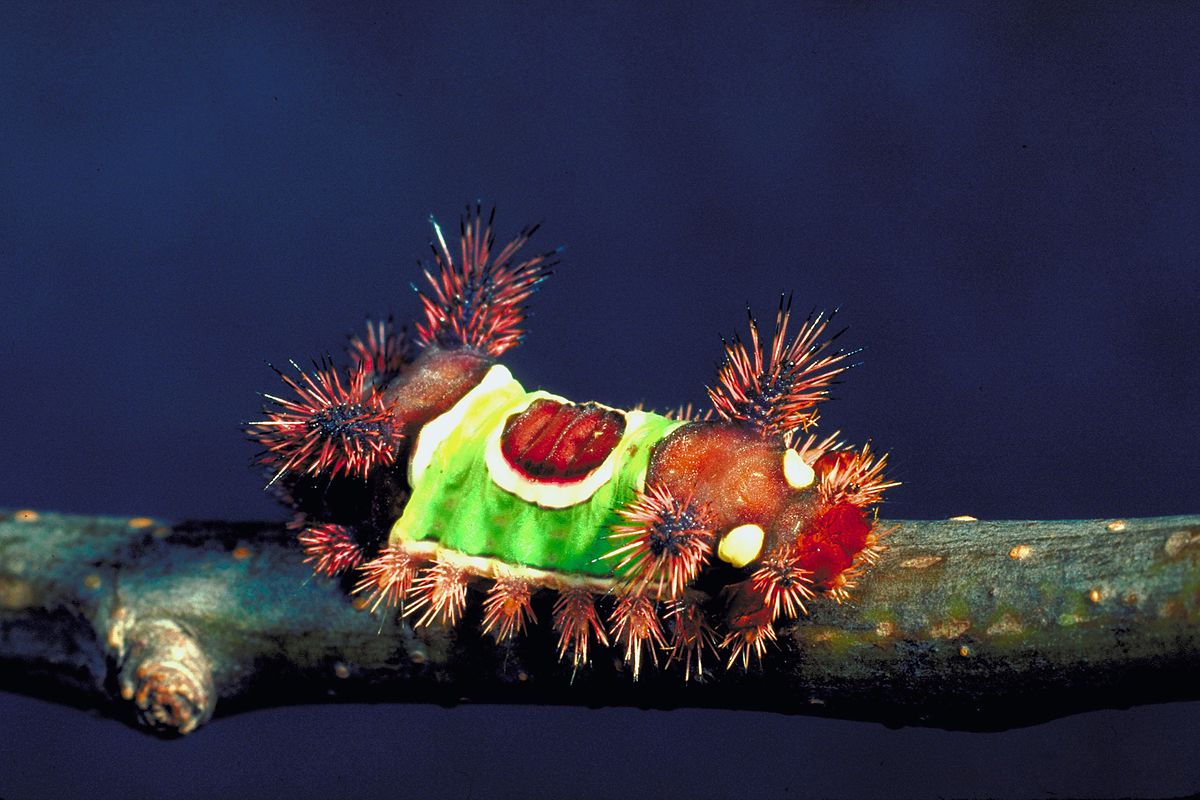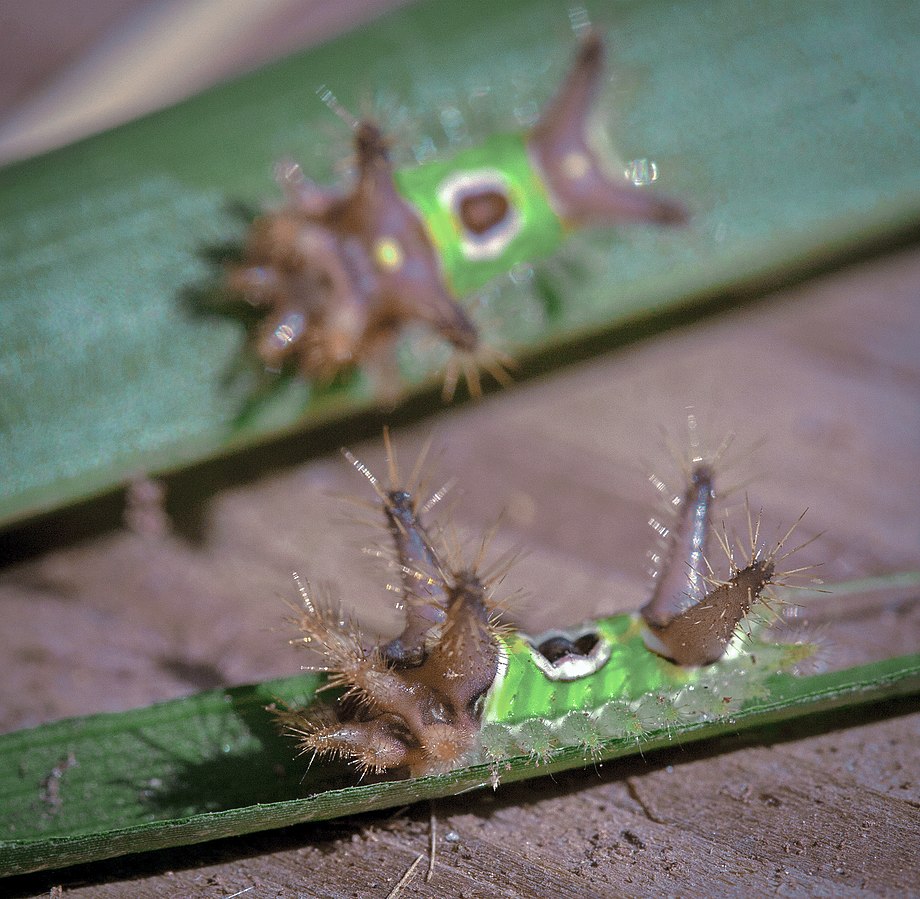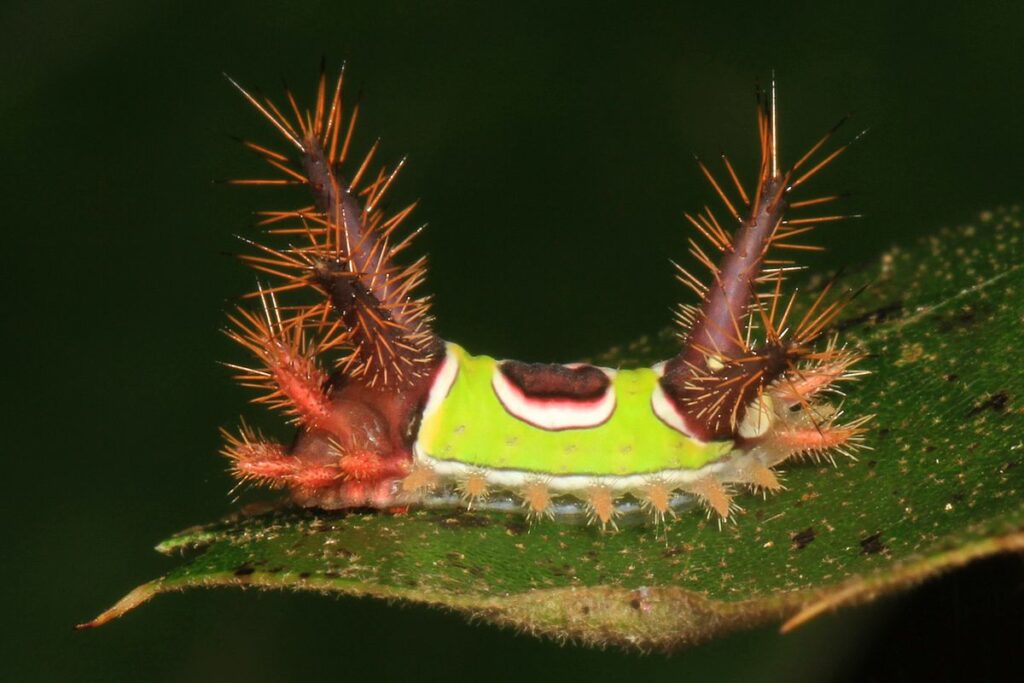Unveiling the secrets of a small but fascinating creature, prepare to delve into the intriguing world of the Saddleback Caterpillar. This particular critter, also known as packsaddle, hails from the slug caterpillar family. Although captivating in appearance, their fascinating charm hides a potentially painful secret.
A Glimpse Into the Saddleback Caterpillar’s Unmistakable Appearance

Renowned for its vibrant green hue and patches of brown at each extremity, the Saddleback Caterpillar bears a unique pattern on its back. The intriguing white-ringed spot distinctly resembles a saddle, inspiring its whimsical name. However, there’s more than mere aesthetics to this intriguing creature. It’s crucial to admire its beauty from a distance and avoid direct contact to escape its defensive mechanism.
Beware of the Sting
The caterpillar’s innocent outlook conceals a sharp sting, courtesy of the venomous hairs on its two protruding prongs, located at each end. Those unlucky enough to experience a contact-induced sting report symptoms like intense swelling, prolonged rash, and sometimes, a bout of nausea. For the safety of individuals with easily irritable skin, total avoidance of these beguiling critters is highly recommended.
The Saddleback Caterpillar: Habits, Habitat, and Dietary Preferences

Commonly spotted across North America, particularly during the late summer to early autumn season, Saddleback Caterpillars are usually found feasting on trees and corn. These critters have an uncanny knack for stealth and are often discovered inadvertently, generally leading to unpleasant encounters.
Post Sting Care
If you ever find yourself on the unfortunate receiving end of a sting, it’s essential to remove the embedded hairs with haste. Tape application over the affected area and swift removal can safely extract these venomous hairs. Instances of a sting should also alert individuals to adopt a constant vigilance approach, particularly when outdoors or around flowering plants.
Harvesting Knowledge on the Saddleback Caterpillar Sting

Many caterpillar species can sting, but the Saddleback poses one of the greatest threats due to its potent venom. Protecting ourselves often boils down to being capable of identifying these creatures and remaining cautiously vigilant while outdoors. In case of an accidental encounter, here are a few tips to mitigate the pain:
- Cleanse the area with soap and water.
- Apply an ice pack to alleviate swelling.
- Consider using baking soda to soothe the area.
Provisional home remedies might only provide transient relief, as potent topical creams like Benadryl have had mixed success rates in remedying the pain.
Signs of Severe Reaction
Special attention must be paid to potential severe reactions post-sting, particularly for those with pre-existing allergic tendencies or sensitive skin. Spotting an unusual reaction might warrant immediate medical attention. Remember, the best way to never experience a Saddleback Caterpillar sting is to avoid handling any unknown insects while indulging your green fingers!
Indulge further into the insect realm through these related resources: